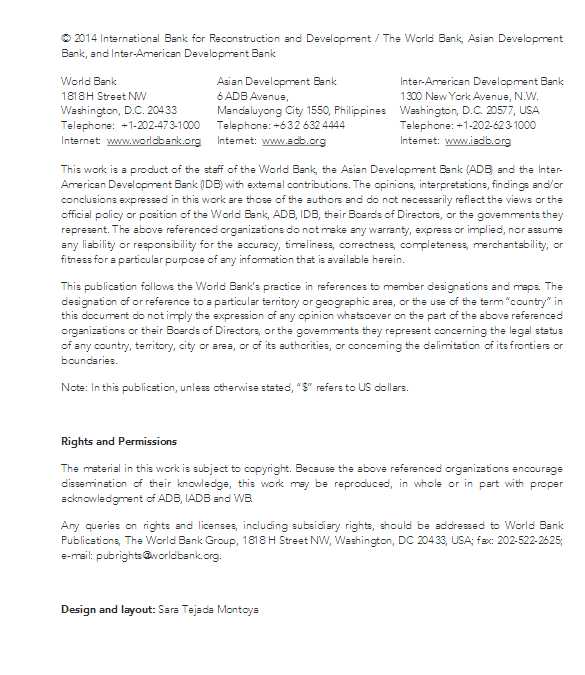| 23rd August 2017 12:53 PM | |
| shikha | Re: PPIAF PPP Reference Guide As you are looking for PPIAF Public-Private Partnerships (PPP) Reference Guide, so I am providing PPIAF Public-Private Partnerships (PPP) Reference Guide: PPIAF Public-Private Partnerships (PPP) Reference Guide Rights and Permissions The material in this work is subject to copyright. Because the above referenced organizations encouragedissemination of their knowledge, this work may be reproduced, in whole or in part with properacknowledgment of ADB, IADB and WB. Any queries on rights and licenses, including subsidiary rights, should be addressed to World BankPublications, The World Bank Group, 1818 H Street NW, Washington, DC 20433, USA; fax: 202-522-2625;e-mail: pubrights@worldbank.org. Introduction A growing number of developing country governments are interested in using Public-Private Partnerships(PPPs) to provide public infrastructure assets and services. This Reference Guide exists to help them.Specifically, it aims to help government officials and other interested parties to answer three questions: What are PPPs, and why would we want to use them? What kind of policy, legal, and institutional framework do we need to put in place to ensure PPPs achieve their objectives efficiently and effectively? What is the process for developing and implementing a PPP project? A substantial body of knowledge on PPPs has been built up by practitioners in governments, the privatesector, international institutions, academics and advisors. This Reference Guide helps readers navigate thisbody of knowledge. It introduces key topics on PPP, sets out options, and directs readers to examples, andkey references where they can find out more. The Reference Guide is not intended as a Toolkit, setting out how to approach everything. Nor is it a manualof best practice-the state of knowledge on many topics is not yet well enough developed to prescribe bestpractices (which in any case are situation specific). Rather, it is the user-interface for the body of knowledge,setting out the key topics and issues, providing an overview, and letting the interested practitioner knowwhere to go to learn more. Key Definitions-What Is a PPP? There is no single, internationally accepted definition of ‘Public-Private Partnership’. This Reference Guidetakes a broad view of PPP, as: A long-term contract between a private party and a government entity, for providing a public assetor service, in which the private party bears significant risk and management responsibility, andremuneration is linked to performance. This definition encompasses PPPs that provide new assets and services, and those for existing assets andservices. It can include PPPs in which the private party is paid entirely by service users, and those in whicha government agency makes some or all of the payments. The project functions transferred to the privateparty-such as design, construction, financing, operations, and maintenance-may vary from contract tocontract, but in all cases the private party is accountable for project performance, and bears significant riskand management responsibility. Section 1.1: What is a PPP: Defining ‘Public-Private Partnership’ provides more information on the range of contract types that constitute PPPs under this definition and the differentnomenclature used to describe them. The definition encompasses contracts in many sectors and for many services, provided that there is a publicinterest in the provision of the service, and the project involves long-life assets concomitant with the longterm of the PPP contract. Throughout this Reference Guide, the term ‘infrastructure’ is used loosely to coverthis range of sectors and services for which PPPs are used. In this context, ‘infrastructure’ includes economic,social, and government infrastructure-that is, the ‘basic physical and organizational structures’ needed tomake economic, social, and government activity possible (using the Oxford English Dictionary definition).Section 1.2: How PPPs Are Used: Sectors and Services describes further the range of sectors and servicesfor which PPPs are used.   PPIAF Public-Private Partnerships (PPP) Reference Guide api.ning.com/files/Iumatxx-0jz3owSB05xZDkmWIE7GTVYA3cXwt4K4s3Uy0NtPPRgPWYO1lL rWaTUqybQeTXIeuSYUxbPFWlysuyNI5rL6b2Ms/PPPReferenceGuidev02Web.pdf |
| 23rd August 2017 12:38 PM | |
| Unregistered | PPIAF PPP Reference Guide My friend is searching for PPIAF Public-Private Partnerships (PPP) Reference Guide. He said me to also to search for it, so someone is here who will provide PPIAF Public-Private Partnerships (PPP) Reference Guide? |